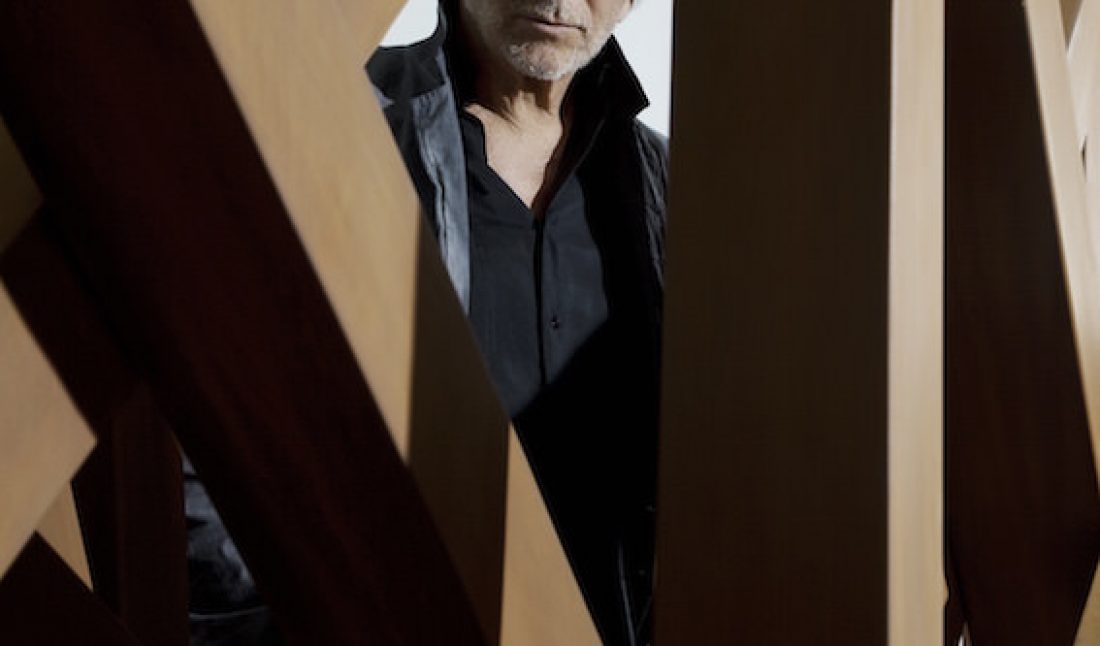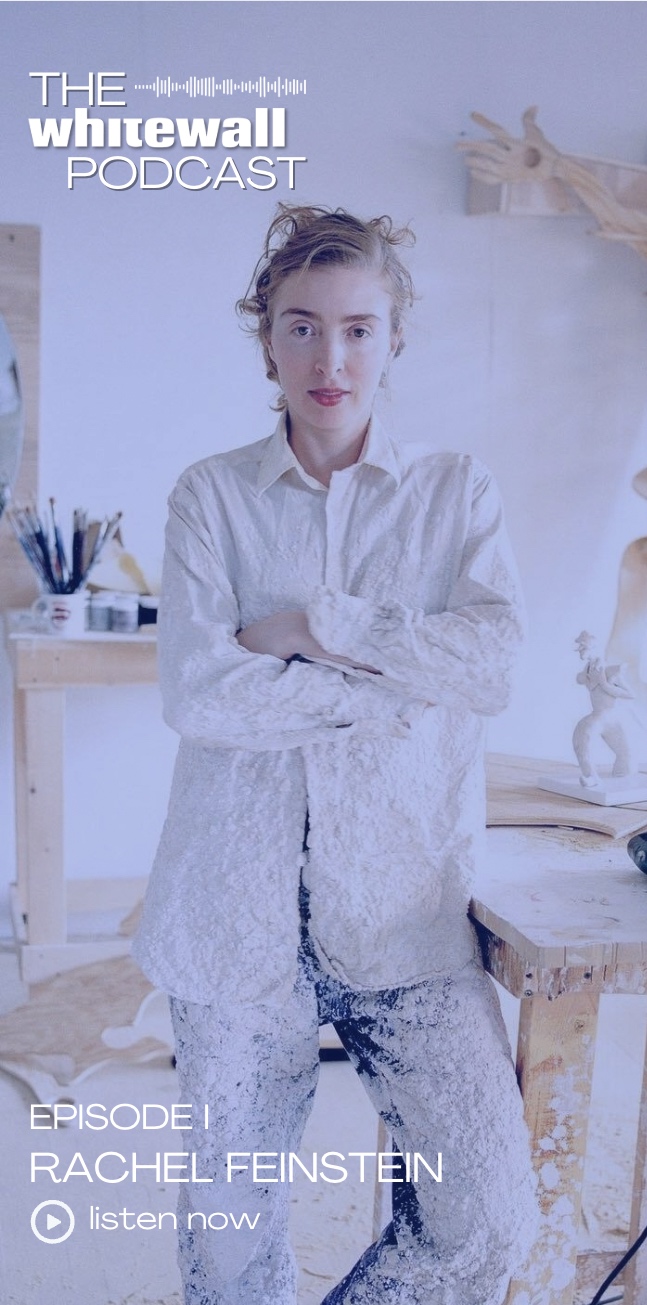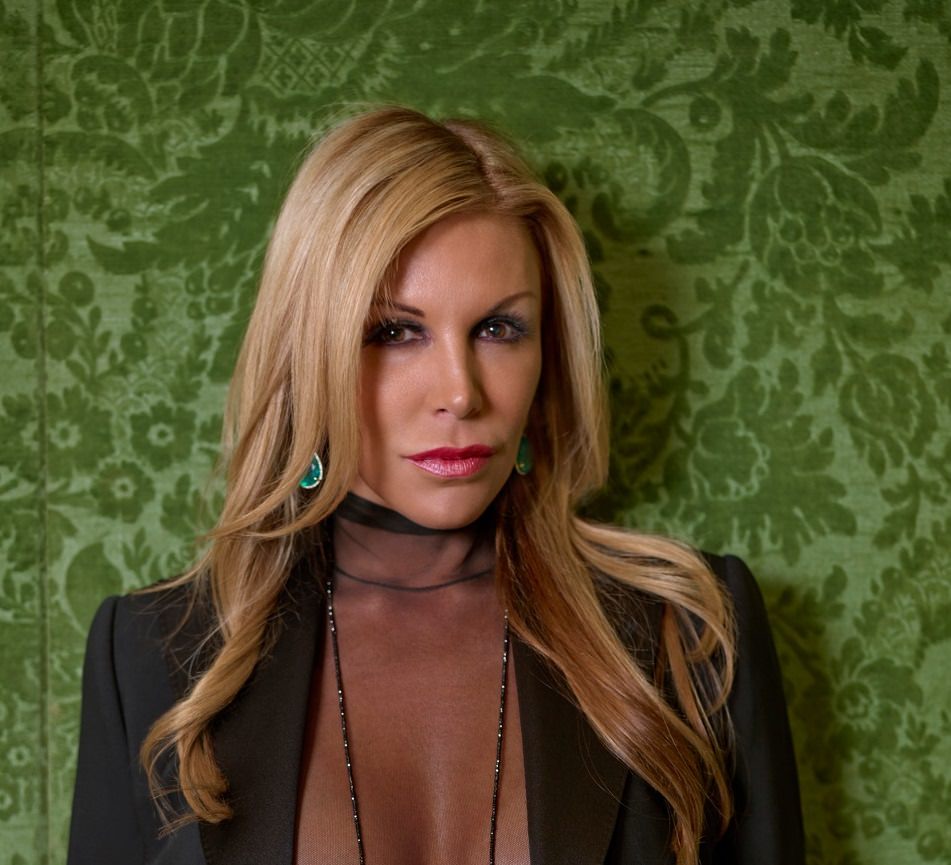Bernar Venet’s minimalist work brings together some of the most important avant-garde tendencies that defied Pop in the 1960s: New Realism, Fluxus, l’École de Nice . . . This year, exactly 50 years after first setting foot on American ground, Venet is being celebrated by his adopted city, New York, with one of his public sculptures temporarily raised at 17th Street on Union Square, a solo show at Paul Kasmin, and the International Sculpture Center’s (ISC) granting him its Lifetime Achievement Award. Last April Whitewall met with the French conceptual artist at Hotel Americano in Chelsea, while he was in the midst of preparing for the opening of his “Angles” exhibition at Paul Kasmin Gallery. He spiritedly shared some of his memories on his unusual trajectory and thoughts on the evolution of his radical work, which is placing him once again into the spotlight.
WHITEWALL: New York seems to be celebrating you this year. One of your sculptures just got installed on Union Square, you received the ISC Lifetime Achievement Award with Kiki Smith, and Paul Kasmin inaugurated your first New York solo show in the past ten years. How are you feeling at the moment?
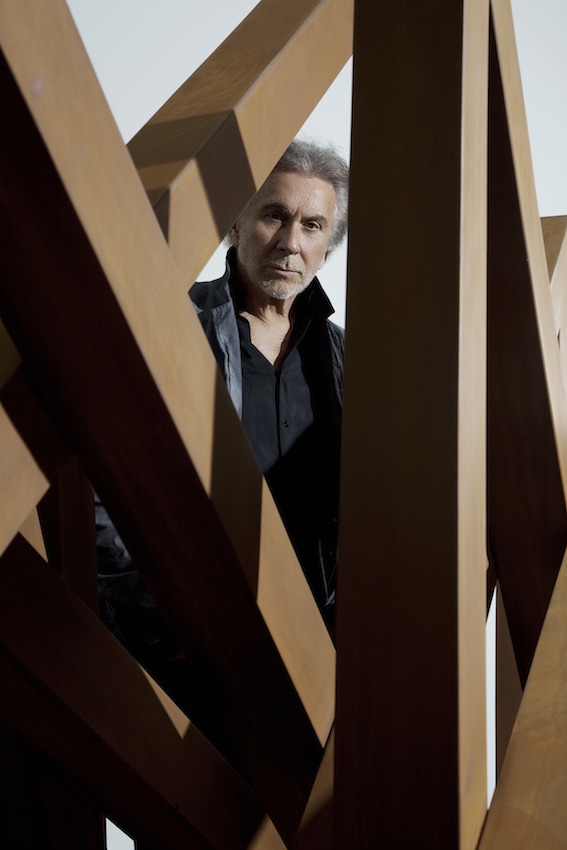 Photo by Steve Benisty
Photo by Steve Benisty
BERNAR VENET: I’m very glad. It’s been exactly 50 years since I arrived in New York. It reminds me of the day I arrived, looking at the city, thinking, “Oh, my God, how am I going to get anywhere over here?” Let’s just say it’s a great pleasure.
WW: This is the first new work you’ve done in a while. How is this exhibition, “Angles,” different from your past work?
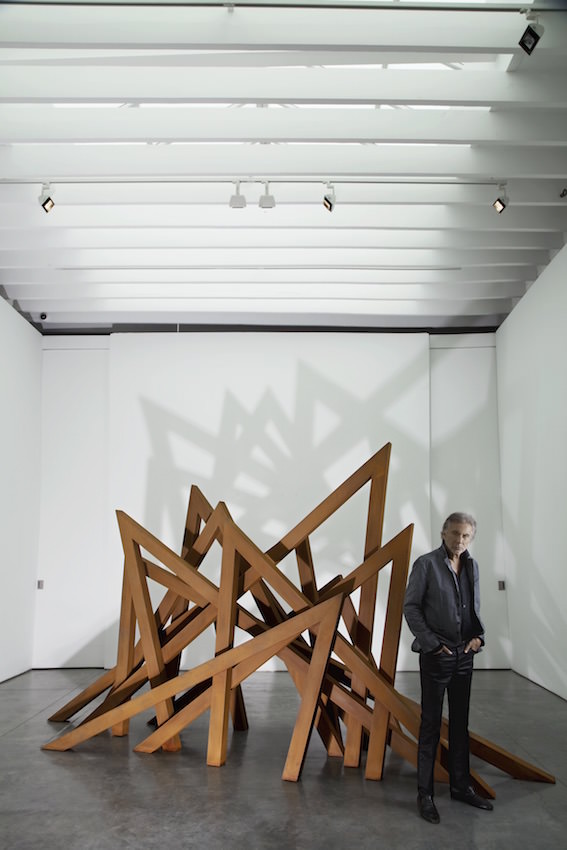 Photo by Steve Benisty
Photo by Steve Benisty
BV: It has become obvious that the main subject of my work is the “line.” Over the past forty years, I have developed, in paintings, reliefs, and sculptures, different possibilities including “Straight Lines,” “Arcs” (curved lines), and “Indeterminate Lines,” also trying to find original propositions.
The “Angles” were the subject matter that I had difficulty developing, previously not seeing many possibilities. I could finally find some interesting solutions when I decided to present them as “Effondrements” (collapses), and as I introduced more and more disorder to their configurations.
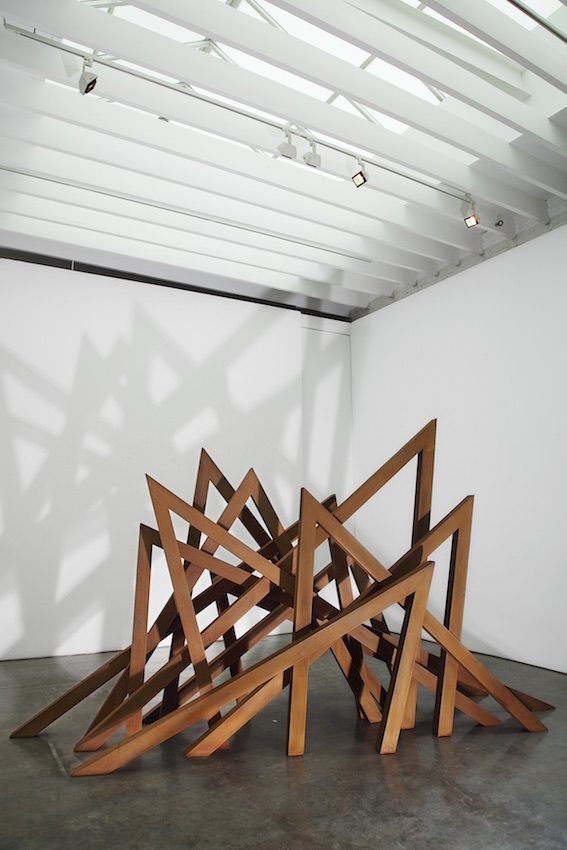 Photo by Steve Benisty
Photo by Steve Benisty
More recently, my decision to make some very vertical “Angles” came as a surprise to me and others while they were exploring verticality in a way that was very different from what I have done previously.
My obsession with experimentation can make it difficult sometimes for the public to immediately understand the nature of my work.
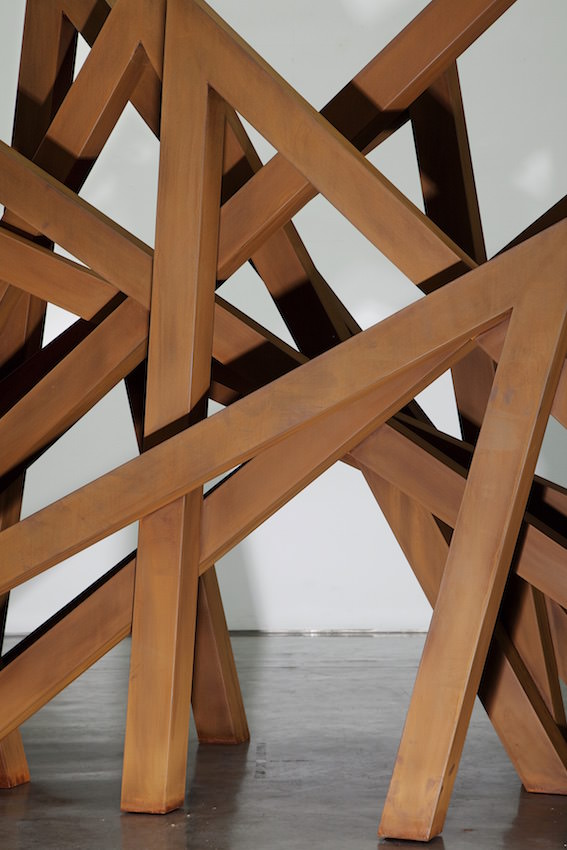 Photo by Steve Benisty
Photo by Steve Benisty
WW: Your Foundation in Le Muy is American, as you are an American resident, so why did you choose to have it in the South of France?
BV: Because I was born in the region and I go there every summer. This is my territory, and where my family and friends are. Living in New York for fifty years has been an enriching experience. And it still is. But with the years passing by so quickly, I feel like returning to my roots and being able to work more peacefully.
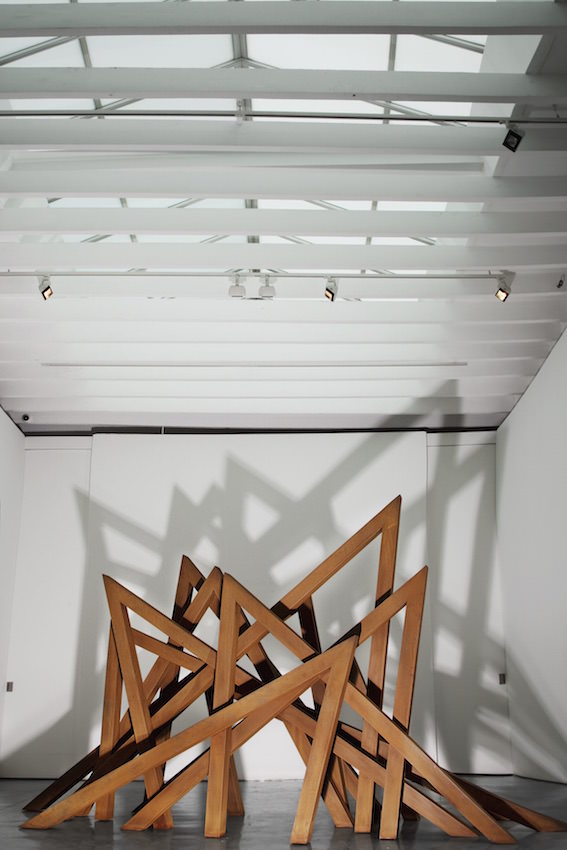 Photo by Steve Benisty
Photo by Steve Benisty
The Foundation that I created is also one of the main motivators for me to be here. Originally, I was only looking for a piece of land in Provence that I could use to store my sculptures, but I didn’t have a specific place in mind. That is, until a friend of mine convinced me that Le Muy was the ideal geographic location—close enough to Nice Airport and to Saint-Tropez, and also a relatively short distance to the main highway.
I realize today how lucky I have been to find this property to host the foundation, as it’s so easy to access for large crowds visiting the South of France.
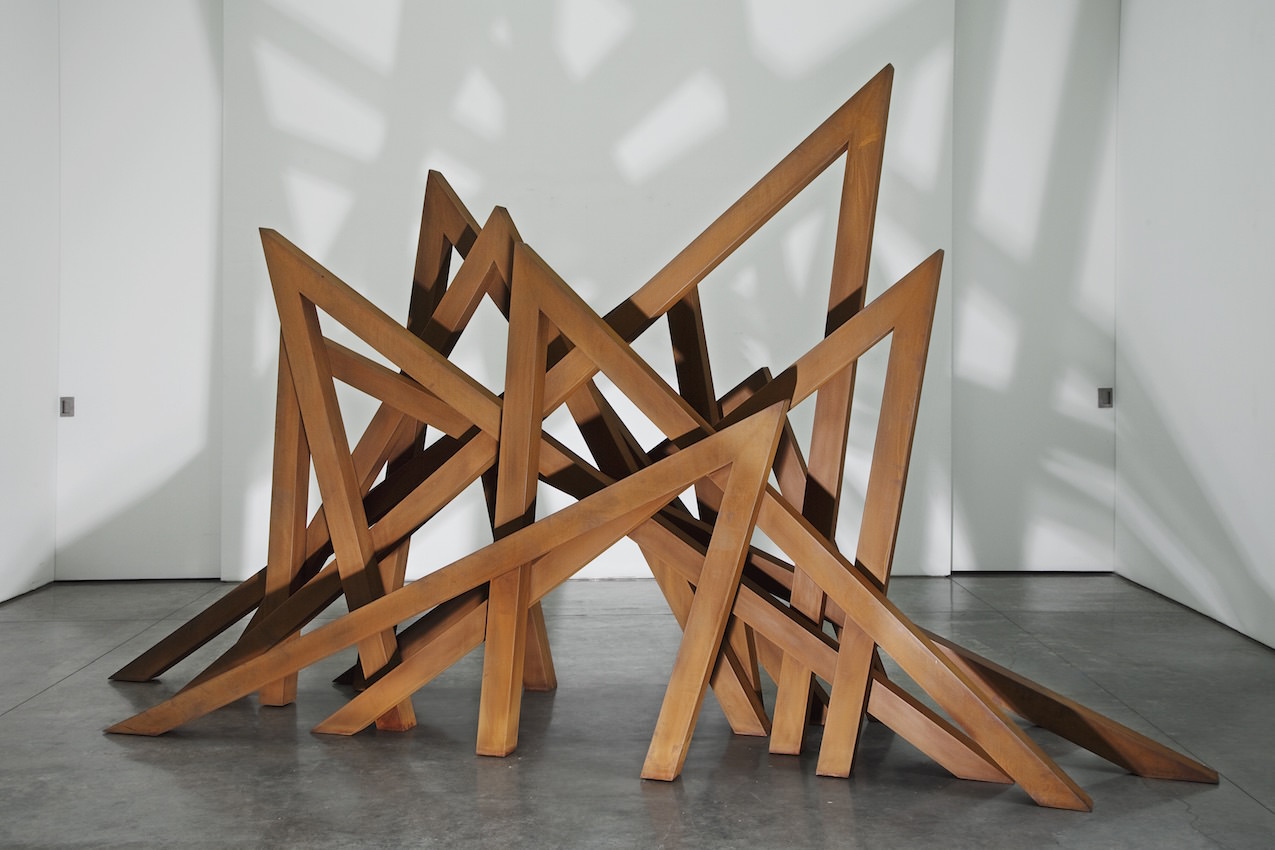 Photo by Steve Benisty
Photo by Steve Benisty
WW: When it comes to collecting other artists’ work, what exactly are you looking for? What attracts you in another artist’s piece?
BV: The collection is a bit of a testimony of the life I lived in the art world, in Nice, in Paris, and especially in New York over the course of 50 years. We can see a bit of this world in the book RAW—Artist Portraits that was just published this summer. It’s a collection of memories, of traces, also a tribute to all these artist friends for whom we can only have great respect and immense admiration.
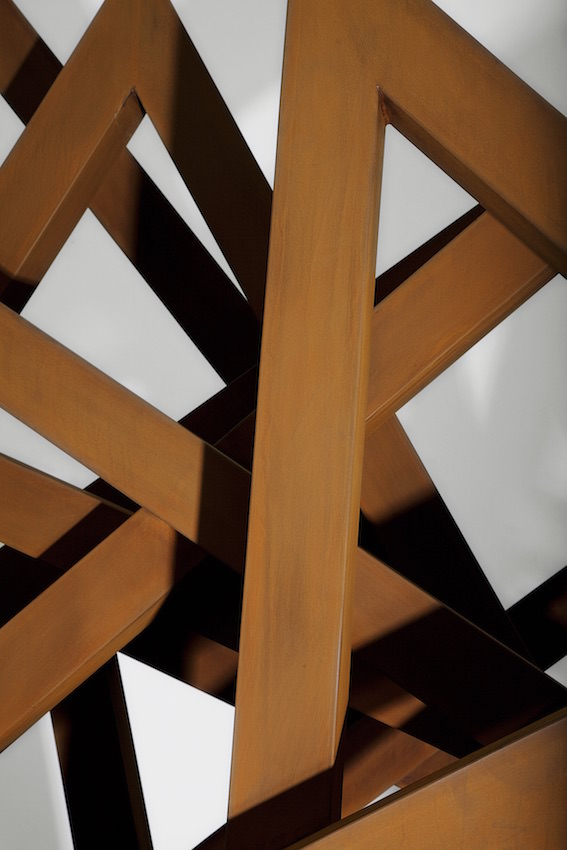 Photo by Steve Benisty
Photo by Steve Benisty
I did not start with the ambition to collect. I was just making exchanges because nobody was selling their art in the early days. It was only after I acquired the property in Le Muy that I got more involved in purchasing major pieces, when the occasion arose.
I realized that I had a collection when Gottfried Honegger asked me to present it at the Espace de l’Art Concret in Mouans-Sartoux, in France. Now that the Venet Foundation exists, we’ve had more opportunities to acquire some truly exceptional works, like the Stella Chapel and two major works by James Turrell (Elliptic Ecliptic and Prana Prana from the “Skyspace” and “Aperture” series), with Alexandre Devals, director of the Venet Foundation.
We are creating a new sculpture park with recent acquisitions of works by other artists, including Richard Long, Sol LeWitt, Frank Stella, and Ulrich Rückriem.
WW: When did you decide to become an artist yourself?
BV: There are two moments that were determinant in my life. The first one was when I was 11 years old. I was an average student, not very interested in academic studies. I remember one day showing a drawing I had just made to my teacher and seeing an expression of surprise and admiration. For the first time, I realized that I could be noticed and appreciated for what I was doing. The drawing was soon hanging on the walls of the classroom. I was very proud to have found a way to exist in the eyes of my student friends as well as my teacher. This was a major moment in my life then, because you have to know that I was very disadvantaged during those days, being a very sick (asthmatic) child, who was also poorly dressed, as well as skinny and unable to impress anybody in my physical activity.
But the most determinant moment happened when my mother took me to Digne to buy some oil paint. I was also around 11 or 12 years old. After selecting different colors and canvases, while she was on line to pay, I noticed a small book—which I still have—in the outside window of the shop. I could see the reproduction of a painting on the cover but could not understand the title. It was totally abstract to me. “Renoir!” I asked the storeowner what that word meant and it was explained that Renoir was a famous artist, exhibited in museums all around the world, that his paintings cost a fortune and many books were published on his work, et cetera. I understood that day that being an artist was perhaps a way to earn a living and that I might not have to grow up to work at the village factory, “Pechiney,” like my father, mother, brothers, and all my friends.
I started to dream, paint a canvas a day, and put all my energy into doing art and reading biographies of famous painters. When I was 14, I had my first one-man show at my school, and at the age of 19, just before enrolling in the army, I exhibited about 50 artworks, most of them on large canvas, slightly influenced by Paul Klee. I was lucky enough soon after the army, at the age of 23, to exhibit my work at the Museum of Modern Art in Paris alongside such artists as Warhol, Rauschenberg, Arman, et cetera.
WW: That’s a very short time period between both shows.
BV: It’s a short period, but while I was in the army I was lucky enough to convince my superiors and the colonel to put at my disposal a very large studio. I spent ten months doing art almost exclusively, without having anything to worry about. I had a bed, clothes, food, and a studio in which I could paint.
That’s when I started to do some more radical works, using leftover cardboard and tar as my materials, the kind of works that I exhibit this summer at the Espace de l’Art Concret in Mouans-Sartoux.
WW: What prompted your decision to move to New York from Nice?
BV: When I was in Nice, I was doing these black tar paintings, canvases whose surfaces were covered in tar. Later on, I made some cardboard reliefs that I would paint in yellow, blue, or red—only I never found anybody to buy them. It was the time where Pop art was really hot: 1963 to 1965. There was no Minimal art at the time, so if you wanted to be “in” you had to do figurative art, Pop art, or New Realism, and I wasn’t doing that at all. I was following a very sober aesthetic and nobody was interested. To tell you the truth, I was not eating every day and I was going to the market to get leftovers. It was a very tough period. I knew Arman, as I would help him occasionally with his work, and my dream was to join him in New York. I knew that this was where everything was happening and I was telling him all the time, “One day I’ll come.”
One day in 1965, after helping him finish a big piece in his studio, he offered me a work and said, “This is for you if you want to come to New York,” and I said, “Yes, I’ll come, but I’m not going to sell your work.” It’s like if someone gives you a Picasso to buy a car with it—forget it! First month: You’re happy because you have an Arman. Second month: It’s still okay, but after six months when you’re not eating well . . . I sold the piece for $300, spent $150 on my ticket and had $150 left in my pocket for when I arrived there. I was on the plane, with no knowledge of the English language, no advice, or telephone numbers. I didn’t even have a place to sleep. I had no idea, really! I was on the plane going to New York with $150 That was it.
This article is published in Whitewall’s winter 2017 Luxury Issue.







